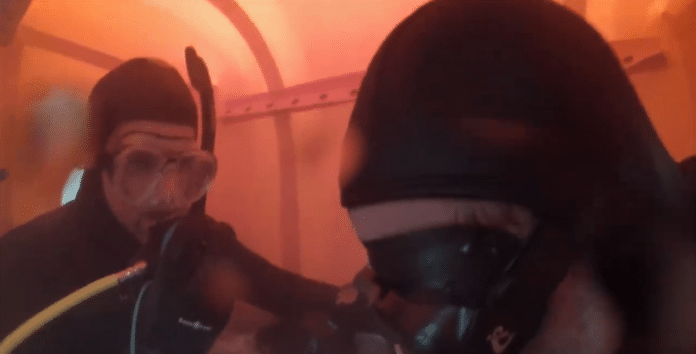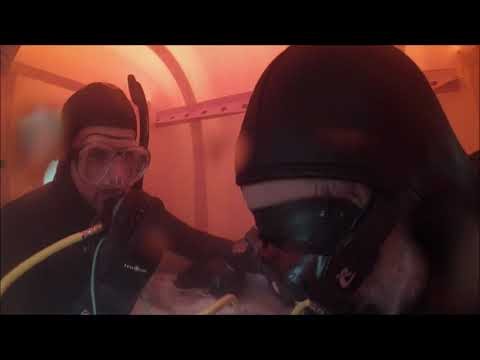A portable, underwater “tent” concept designed to give divers more bottom time while protecting them from the bends was recently awarded a U.S. patent.
The inflatable Ocean Space Habitat, designed by National Geographic explorer Michael Lombardi and Winslow Burleson, a New York University associate professor, allows divers to hang out in the dry chamber and do multiple dives at depth before beginning the decompression ascent.
Advances in technology have enabled divers to explore deeper and stay there longer. However, these excursions require divers to undergo decompression — the process of allowing absorbed gasses to be released from the body’s tissues at a slow rate — in order to prevent decompression sickness. Long decompression stops before an ascent can leave divers cold, tired, dehydrated, exposed to the elements, and even threatened by predators such as sharks.
Enter Lombardi and Burleson’s underwater habitat, which provides a portable respite for divers for decompression and other activities. Divers can enter the tent-like structure, remove their equipment (including mouthpiece and breathing apparatus, since they’re entering a breathable environment), and then engage in a variety of tasks from eating to examining specimens they’ve collected to napping or relaxing.
A unique feature of Burleson and Lombardi’s underwater habitat is its portability: the habitat and its anchoring system is portable enough for divers to travel with it in their checked luggage.
The other significant advance is the habitat’s modular life support system, which has a replenishable source of oxygen, a scrubber, and a fan to remove carbon dioxide from the environment, continuously cleaning the air in the tent. This unique ability to control the atmospheric composition creates a safe and breathable environment for divers.
The research team successfully deployed the habitat during a test dive off the coast of Rhode Island in late October, conducting the first-ever field deployment of the patented life support system. They will continue to conduct a series of test dives this spring, and will begin to spend longer periods of time underwater, up to 8-12 hours, and possibly overnight, within the next six months.
Using the Ocean Space Habitat, Burleson tells National Geographic,
“. . . is like turning a short hike in the woods into a weekend-long camping excursion. The habitat allows you to do more of what you’re coming for, whether you’re a photographer or coral researcher or citizen scientist.”
Lombardi first developed the concept back in 2012, and only recently secured a patent for the Ocean Space Habitat.
Even before that, the concept of an underwater “tent” had been around for a while:
And another one from 1987 for those that think that the "underwater tent" is new: https://t.co/iKigWAcy1u
— Dr. Luiz Rocha (@CoralReefFish) January 28, 2019
For more info, check out the National Geographic article or watch the video below.


